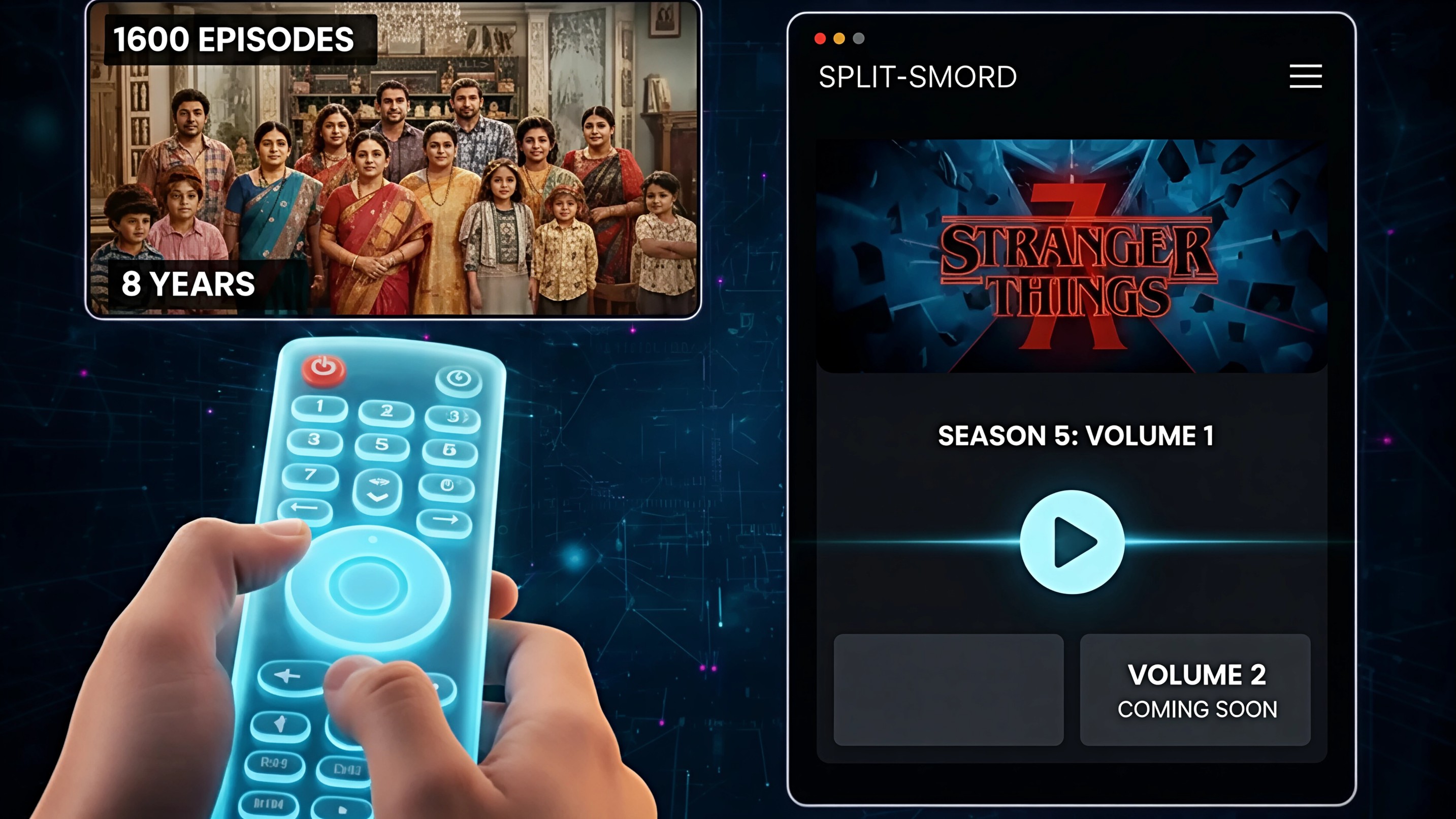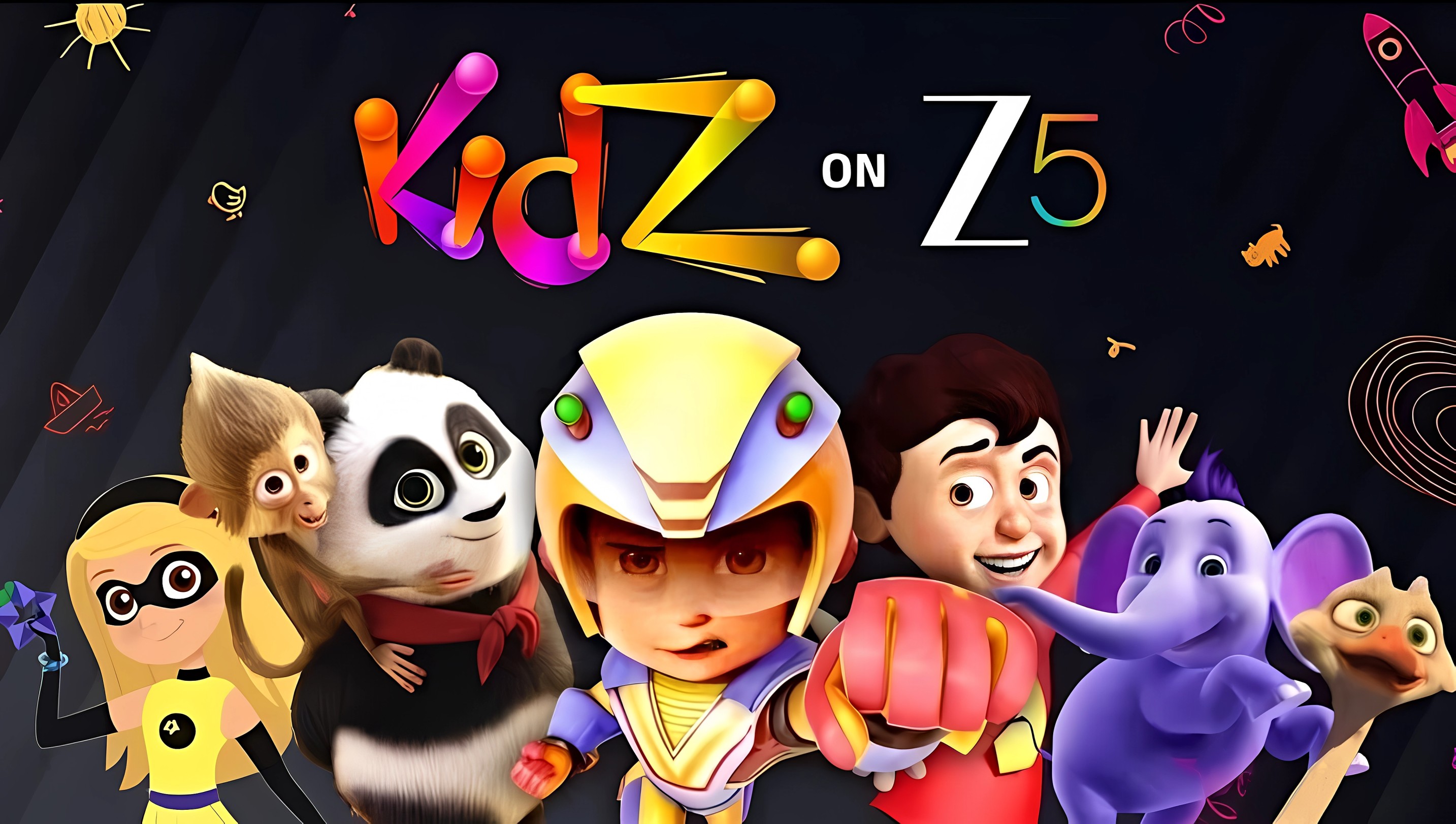Indian audiences once treated television as a continuous flow of episodes rather than a series of clearly marked seasons. Viewers stayed with families like the Viranis across 1600 episodes over 8 years, growing older alongside the characters without any structured breaks. That backdrop makes the recent rise of OTT split seasons a notable shift in how long form stories are released and consumed.
The entry of American shows into Indian cable bundles first familiarised viewers with the idea of long running series divided into multiple seasons. As OTT platforms expanded reach, that idea shifted again. Many English language titles no longer stop at season breaks. They now divide seasons into two parts, often labelled part one and part two or volume one and volume two.
Popular shows on global platforms illustrate the pattern. Breaking Bad split its fifth season into two parts in 2012. Money Heist followed with a two volume season in 2021. Ozark and Stranger Things both divided their fourth seasons into two segments in 2022, while Yellowstone used a similar split for its fifth season on JioCinema.
Indian series have adopted the model as well. The Night Manager on Disney Hotstar, Scam 2003 The Telgi Story on SonyLIV, Aarya on Disney Hotstar, and Showtime on Disney Hotstar all released recent seasons as two part drops. Cobra Kai is currently the only show to have a three part sixth season, and Stranger Things is expected to release its final fifth season in three volumes over three months from November 27.
ADVERTISEMENT
Media and content strategist Devdatta Potnis describes the format as the OTT equivalent of a film intermission. In his view, the pause between parts functions as a creative break that keeps excitement alive, avoids binge fatigue, and effectively doubles marketing windows. The result is momentum that stretches across months, giving platforms more chances to remind audiences about the show.
Industry voices remain divided on how to label this approach. Some executives treat separate parts as full seasons in their own right. Others see them as another marketing tool built on release timing rather than content structure. For Udhay Sodhi, former business head at Sony Liv, seasons and parts of seasons both serve a single long term aim, which is to build durable franchises around popular shows. Platforms, he notes, make release choices based on their specific marketing goals.
Beyond branding, the economics are clear. Dividing a season into multiple parts helps control subscriber churn, the rate at which customers cancel or fail to renew their subscriptions. Potnis points out that staggered rollouts hold subscribers for longer across billing cycles and refresh interest without heavy new acquisition spend.
ADVERTISEMENT
Nitin Burman, group chief revenue officer at Balaji, frames split seasons as a considered retention strategy, not a return to traditional television models. Placing the break at a crucial plot point pushes viewers to renew in order to watch the conclusion. Potnis adds that platforms are not reversing the OTT promise but refining it through emotional pacing and controlled drops that echo the anticipation of weekly television without simply copying its schedule.
He also warns that not every show is suited to this structure and not every viewer has the time to follow elongated release plans. As OTT settles into everyday life alongside older mediums, platforms will need to keep convenience and freshness in balance so that seasonal experiments support rather than strain audience attention.
Follow Marketing Moves on Instagram and Facebook for industry insights, strategy breakdowns, and brand transformation stories.
















